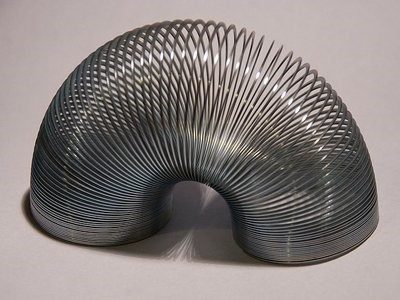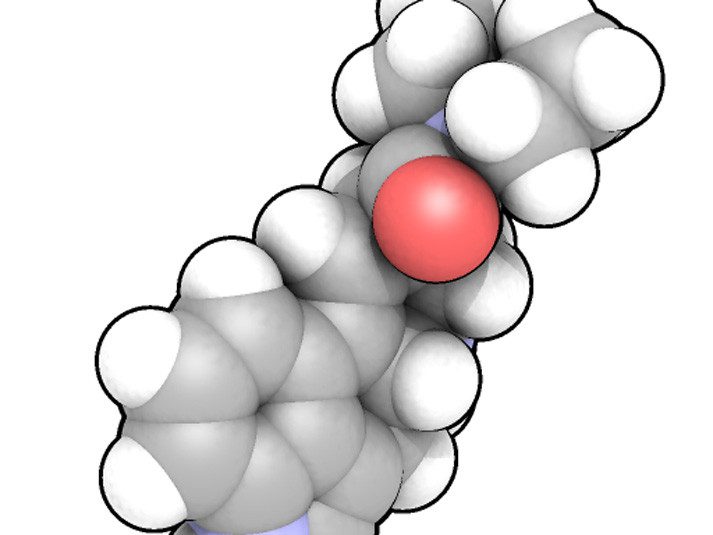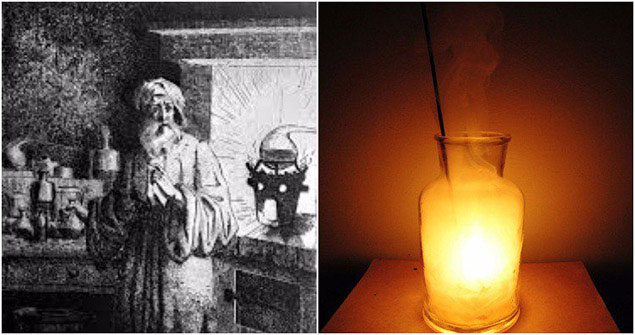The following “legends” are sure to evoke a sense of familiarity yet also a sense of wonder, as you may not realize they were created in such unique circumstances.
Top Accidental Inventions
- 1. Play-Doh
- 2. Popsicle
- 3. Slinky
- 4. Coca-Cola
- 5. Chocolate Chip Cookies
- 6. Potato Chips
- 7. Pacemaker
- 8. Silly Putty
- 9. Microwave Oven
- 10. LSD
- 11. Artificial Sweeteners
- 12. Post-it Notes
- 13. Stain-Repellent Solutions
- 14. Breakfast Cereals
- 15. Penicillin
- 16. X-Ray Imaging
- 17. Velcro
- 18. Phosphorus
- 19. Tabun
- 20. Vulcanized Rubber
- 21. Antimalarial Drugs
- 22. Bubble Wrap
- 23. Viagra
Some scientists dedicate their entire lives to inventing groundbreaking tools or methods to tackle issues that have plagued the world for centuries. However, it is not uncommon for inventions to arise merely by chance, leading to remarkable creations that are still widely used today.
Regardless of the method, we should be grateful and fortunate, as these inventions all share a common goal: to build and improve a better world for everyone.
Below is a list of “accidental” inventions from the past, each resulting in unexpectedly significant outcomes:
1. Play-Doh

Play-Doh was officially created in 1957.
Inventor: Joseph McVicker, President of Kutol Products – a soap manufacturing company based in Cincinnati, Ohio.
Original Purpose: In the early 1950s, Kutol successfully created a special clay powder designed to remove black soot stains from homes that used coal or wood for cooking and heating. However, as reported by the Christian Science Monitor, the public quickly shifted from coal to gas, posing a severe risk of loss for the company.
Development and Outcome: McVicker recalled a lesson from his sister about using soft dough-like substances to simulate the pliability of clay. In 1957, he made the pivotal decision to transform this design into a colorful children’s toy, which ultimately generated millions of dollars for the company.
2. Popsicle

Unbelievably, this product was invented by an 11-year-old boy.
Inventor: Frank Epperson, at just 11 years old.
Original Purpose: In 1905, while playing with his family in the backyard of his home in San Francisco, Epperson accidentally mixed dry soda powder and water together in a cup using a stirring stick, then left the concoction outside and went inside.
Development and Outcome: The next morning (according to Gizmodo), Epperson discovered a “frozen pop” there. He named this invention after himself: Eppsicle, and eventually shared it with his peers, and even his own children. The kids began calling his creation Popsicle, as it fizzed when made from soda, leading Epperson to patent the design in 1923, marking the official debut of the Popsicle – the best-selling summer treat of all time.
3. Slinky

This spring toy was invented by a naval engineer.
Inventor: Richard Jones, Naval Engineer.
Original Purpose: In 1943, Jones was involved in the creation of a device for measuring energy levels on battleships.
Development and Outcome: While focusing on researching compression springs, a spring fell off the table and bounced repeatedly until it finally settled on the floor. After several modifications, the Slinky toy was officially born.
4. Coca-Cola

John Pemberton’s product became very popular and was later renamed Coca-Cola.
Inventor: John Pemberton, Pharmacist.
Original Purpose: Living in Atlanta in the 1880s, Pemberton marketed a syrup made from wine and coca leaf extract called “Pemberton’s French Coca Wine,” advertised as a remedy for headaches and anxiety.
Development and Outcome: In 1885, Atlanta banned all forms of alcoholic beverages, prompting Pemberton to remove the alcohol from his product, leaving only the coca solution to mix with carbonated water, creating a soda. Surprisingly, this new creation became immensely popular upon its launch, later adopting the name Coca-Cola.
5. Chocolate Chip Cookies

This special cookie was created while the original intention was to make regular cookies.
Inventor: Ruth Wakefield, Owner of Toll House.
Original Purpose: Wakefield simply wanted to… make some regular cookies.
Development and Outcome: In 1930, while mixing a batch of cookies, Wakefield realized she was out of chocolate. To improvise, she broke the remaining chocolate into smaller pieces and mixed them into the cookie dough. She intended to bake them until the chocolate melted and blended with the dough, but surprisingly, the pieces remained “stubbornly” intact, resulting in a brand new type of cookie.
6. Potato Chips

Potato chips were invented by a chef at Carey Moon Lake House.
Inventor: George Crum, Chef at Carey Moon Lake House in Saratoga Springs, New York.
Original Purpose: Crum was attempting to serve French fries ordered by a customer during the summer of 1853.
Development and Outcome: The customer continuously sent back the dish, requesting thinner and crispier fries. Frustrated, Crum sliced the potatoes so thin they couldn’t be cut any thinner and fried them until they were “crispy.” Surprisingly, this created a snack that many people loved and ordered more of.
7. Pacemaker

The pacemaker was successfully invented in 1951.
Inventor: John Hopps, Electronic Engineer.
Original Purpose: At that time, Hopps was conducting research on human hypothermia and trying to apply radio frequency technology to revive and warm the body.
Development and Results: While engrossed in his experiments, he discovered that if the human heart stopped due to a drop in body temperature, we could still save a life using external artificial stimuli. As a result, after extensive analysis, the cardiac pacemaker was successfully invented in 1951.
8. Silly Putty

This toy product was created when the initial purpose was to experiment with the application of silicone instead of rubber.
Inventor: James Wright, Electrical Engineer.
Original Purpose: During World War II, the U.S. government required a rubber supply for manufacturing airplane tires, combat boots, and related items. At that time, Wright was experimenting with the application of silicone as a substitute for rubber, due to its widespread popularity.
Development and Results: In 1943, while testing the properties of silicone oil, Wright added boric acid to the original compound. The result was a gooey substance with a high bounce. At that moment, he couldn’t think of a use for it, and then suddenly had the idea to turn it into a fun and exciting toy for children.
9. Microwave Oven

The moment Spencer realized he had successfully created a machine synonymous with a revolutionary discovery of the era.
Inventor: Percy Spencer, Engineer at Raytheon.
Original Purpose: In 1946, Spencer was involved in a research project on radar applications using a vacuum tube.
Development and Results: During an experiment with the tube, a candy bar in Spencer’s pocket suddenly melted. Immediately, he placed a few unpopped popcorn kernels near the device, and they also began to “pop.” That was the moment Spencer realized he had successfully created a machine synonymous with a revolutionary discovery of the era.
10. Hallucinogenic Drug LSD

Albert Hofmann had no idea that the product he accidentally discovered would become a staple in the underground world.
Inventor: Albert Hofmann, Chemist.
Original Purpose: He was in the process of researching the crystalline acid derivative from ergot fungus (LSD) in a laboratory in Basel, Switzerland in 1938.
Development and Results: Hofmann accidentally ingested a quantity of LSD while examining its properties. Subsequently, he initiated a widespread period of this drug, which became a common item in the underground world.
11. Sweetener

The sweetener was discovered when Constantine was trying to find a substitute for tar.
Inventor: Constantine Fahlberg, Researcher at Johns Hopkins University.
Original Purpose: He was attempting to find a substitute for coal tar-derived asphalt in 1879.
Development and Results: One day, like any other, after coming home from work, he noticed that the cookies his wife made that day were sweeter than usual. The secret ingredient of his wife turned out to be the root of the sweetener that followed.
12. Sticky Notes

The special feature of the adhesive developed by Silver is that you can attach a lightweight object to it.
Inventors: Spencer Silver and Art Fry, working at 3M Laboratories.
Original Purpose: In 1968, Silver created a temporary adhesive in the lab but did not know what to use it for.
Development and Results: The special feature of the adhesive created by Silver is that you can attach a lightweight object to it, like a piece of paper, which can stick to or be removed from a surface without causing any damage. Moreover, the stickiness of this invention lasts a long time and can be reused multiple times. However, all attempts to find a real application for this product in life had not yet led anywhere.
Years later, his colleague – Fry – was annoyed because he could not find a way to attach some papers to his choir book at church. And from there, the great idea met, and sticky notes were born (although it wasn’t until 1980 that they became popular).
13. Stain-Resistant Solution

The stain-resistant solution was invented by Patsy Sherman.
Inventor: Patsy Sherman, Chemist at 3M.
Original Purpose: In 1953, Sherman was hired to work on a project developing a rubber application that would not corrode or degrade when exposed to jet fuel.
Development and Results: One of her assistants accidentally spilled Sherman’s experimental solution on her shoes. Later, she noticed that while most of her assistant’s shoes were dirty around the area, the spilled part remained “immune.” Sherman then re-planned the project and focused on researching the antibacterial compound, known as Scotchgard.
14. Breakfast Cereal

The original purpose was to soften the grains for oatmeal preparation.
Inventors: John and Will Kellogg, two entrepreneurial brothers.
Original Purpose: They were simply trying to find a way to soften the grains for making mixed oatmeal.
Development and Results: In 1898, the two brothers accidentally left a pot of grains boiling in the oven for several days. The mixture began to spoil and mold, but the remaining component became much harder and denser. Curious, they experimented again, and finally removed the awful spoiled mixture, keeping the final product as we know it today.
15. Penicillin

Penicillin is used to treat many types of contagious diseases and infections.
Inventor: Alexander Fleming, Scientist.
Original Purpose: Ironically, Fleming was searching for a “cure-all” remedy in the world. However, when he realized that his research was futile, a new turning point in his life occurred.
Developments and Results: In 1928, Alexander Fleming noticed a petri dish of bacteria in his laboratory that he had discarded suddenly appeared with a type of mold capable of breaking down all the surrounding bacteria. When cultured in a separate environment, he discovered an antibiotic factor inside – penicillin – which could be used to treat many types of infectious diseases. The result was a significant reduction in mortality rates from such diseases, decreasing to just 1/20 of what it was in 1900.
16. X-Ray Method

X-rays can penetrate all objects, including humans.
Inventor: Wilhelm Röntgen, Physicist.
Original Purpose: At the time, Röntgen was struggling with experiments involving cathode rays, during which he discovered a radiation that could penetrate the outer covering of the tube, affecting a compound behind it, causing it to glow.
Developments and Results: Subsequent studies revealed that he had created a new type of ray, named “X-ray”, capable of penetrating almost all objects, including human tissue.
17. Velcro

This product is extremely popular worldwide due to its convenience.
The Velcro fastener was patented in 1955. It is a highly utilized product loved around the world for its convenience.
In 1995, while taking his pet dog for a walk in the woods, Swiss engineer George de Mestral noticed the sharp edges of burdock seeds sticking to his clothes and his dog.
Upon examining these sharp edges under a microscope, he saw thousands of tiny hooks attaching to the loops in his clothing. He suddenly thought of a two-sided fastener, later describing his invention: “One side had hooks as sharp as thorns, while the other side had soft loops like the fibers in my pants.”
He experimented with various materials and discovered that nylon was the best. Thus, the two-sided Velcro fastener, a combination of loops and hooks, was born.
18. Phosphorus

In the quest to turn base metals into gold, an alchemist discovered phosphorus.
A German alchemist, Hennig Brand, accidentally discovered “phosphorus” in 1669 while attempting to distill urine to transform base metals into gold. Although Brand could not achieve his original goal of turning urine into gold, he surprised the scientific community by discovering a greenish residue that could glow brilliantly in the dark, which we now know as phosphorus – the 15th element in the periodic table.
Previous alchemists had experimented with various methods in hopes of turning base metals into gold. In 1669, during such a search, Hennig Brand found phosphorus. In his experiment, he used about 1,100 liters of urine, storing it for several days until it emitted a foul odor. He then boiled the urine at high temperatures, turning it into a mixture with the hope of creating a substance that could transmute common metals into gold. However, rather than discovering a method to refine gold, Brand found a strange glowing residue at the bottom of the flask during the distillation process.
19. Tabun Poison

This poison is so toxic that even a drop can cause dizziness, pupil contraction, and difficulty breathing.
In 1936, Gerhard Schrader and his team discovered a new type of “nerve agent” in Germany while tasked with developing and researching pesticides. After two years of intensive research, a highly toxic organic compound was created and named “Tabun.” Tabun is so toxic that during one careless incident where a drop fell onto a laboratory bench, Schrader and his colleagues immediately experienced dizziness, pupil contraction, and difficulty breathing.
Many believed the lethal nature of this nerve agent would cost lives during the research. In reality, it was Gerhard Schrader and his team who faced life-threatening dangers such as difficulty breathing and temporary loss of sight and hearing while working with the hope of alleviating world hunger. Working for IG Farben in a laboratory in Leverkusen with the mission to create new pesticides, Schrader accidentally discovered an extremely toxic colorless compound believed to be highly effective in killing insects.
However, after some time, Schrader’s research team recognized the overwhelming toxicity of Tabun, as even a small drop of the substance leaking out could negatively impact humans. During World War II, the Nazis summoned Schrader to focus on research aimed at developing and producing Tabun as a chemical weapon.
20. Vulcanized Rubber
American scientist Charles Goodyear spent a decade of his life finding ways to make rubber easier to use and heat-resistant. However, all his research failed.
One day, he accidentally poured a mixture of sulfur and rubber into a hot stove. Under high temperatures, the rubber melted but was not destroyed, forming a waterproof, corrosion-resistant compound. From this discovery by Charles Goodyear, many vulcanized rubber products were created and are now used everywhere.
21. Antimalarial Drug
Quinine is an antimalarial compound derived from the bark of the cinchona tree. Today, we often find it in flavored tonic water as well as in medications for treating malaria.
Jesuit missionaries in South America used quinine to treat malaria as early as the 1600s, but legend has it they learned from the indigenous Andean people.
The story involves an Andean man who got lost in the forest and contracted malaria. Feeling thirsty, he drank from a puddle under a quina-quina tree.
The bitterness of the water made him fear that he had consumed something that would worsen his illness, but the opposite occurred. After his fever subsided, he was able to find his way home and share information about the healing tree with others.
22. Bubble Wrap

In 1957, two Swiss engineers, Alfred W. Fielding and Marc Chavannes, attempted to create a new type of wallpaper with a more prominent design than existing products.
By gluing two layers of film together, they succeeded in creating a new wallpaper with a textured surface that looked quite unique, but ultimately no one wanted to buy it.
It wasn’t until 1959 that a marketing employee came up with the idea of using the wallpaper created by Alfred W. Fielding and Marc Chavannes as protective padding for computers, helping to prevent damage during transport to customers.
Today, this type of paper is known as bubble wrap, widely used across various industries such as food, construction, healthcare, fashion, and more.
23. Viagra

In the 1990s, researchers at the pharmaceutical company Pfizer were studying a new drug to treat high blood pressure and angina.
This drug, named Sildenafil, was tested on male volunteers. Unfortunately, the product had very little effect on angina.
Instead, the patients reported an interesting side effect: their erections lasted at least 30 to 60 minutes after taking the drug.
Pfizer quickly recognized the immense potential of this drug and swiftly patented it in 1996. To date, this product has been used to treat erectile dysfunction in over 30 million men in the U.S. alone.


















































